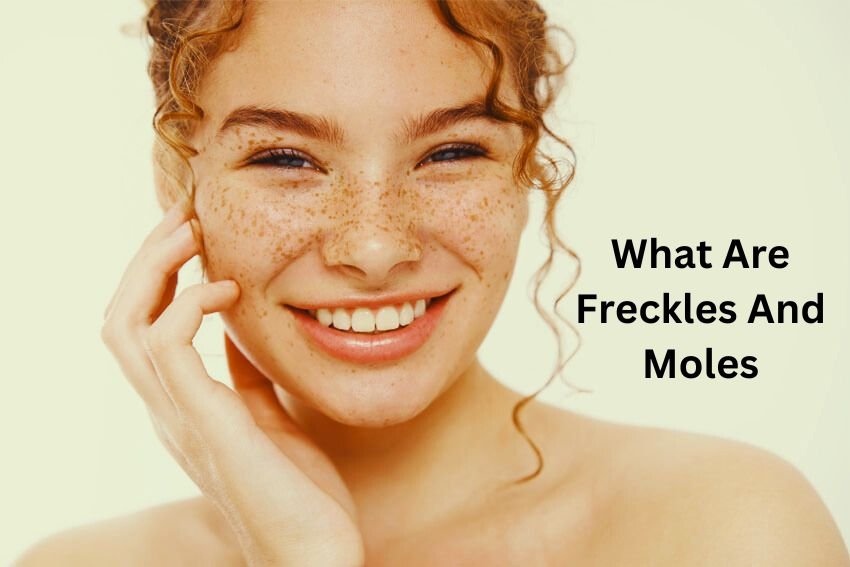The main source of what are freckles and moles, those alluring skin highlights, is excess melanin produced in reaction to ultraviolet (UV) light exposure. Melanocytes are stimulated by sunlight, which serves as a catalyst to produce these charming colored patches. Genetics is important because those who have a family history are more likely to get freckles. Moreover, fair-skinned people are more vulnerable since their melanin provides less protection. Adopting careful sun protection measures becomes essential to preventing the appearance of these endearing melanin expressions.
Your freckles may become darker and more noticeable due to the sun’s damaging rays. If you have fair complexion, this is more likely to happen.
Utilize advanced therapies to transform your skin into radiant splendor. Savor the epitome of dermatological perfection as skilled practitioners utilize cutting-edge methods to reduce freckles and moles and enhance your inherent beauty. Accept confidence and flawlessness with customized treatments designed to fit your specific skin type. Reveal the radiance from within, skillfully eliminating spots and disclosing a glistening complexion.
Untreated natural freckles don’t require care. They do not indicate a skin condition. Depending on the type of freckle you have, they may lighten or disappear completely as you age.
Treatments might help remove freckles if you’re not happy with how they look. Among them are:
- Substances such as trichloroacetic acid (TCA) and alpha-hydroxy acid (AHA)
- Laser treatments
- Cryotherapy (skin freezing)
- Chemical peels
- Creams like retinol, a form of vitamin A
The optimum course of action for you will need to be determined by a dermatologist.
You should see a doctor if your freckles:
- Have jagged borders
- Aren’t symmetrical
- Are sore
- Has a diameter more than 6 mm, or roughly the same as a pencil eraser.
- Get lifted from your skin
- Possess a variety of hues or dark areas.
- Begin to expand or alter in size or hue
Use a rigorous skincare program to protect your complexion from the fleeting charms of freckles. Use a broad-spectrum sunscreen to protect your sensitive skin from the sun’s glaring embrace. This will act as an impenetrable shield against UV radiation. Accept antioxidants, such as vitamin C, as defenders against the sneaky advances of oxidative stress. Use the power of a thorough cleaning regimen to decontaminate your canvas and prevent freckles and moles from appearing subtly. Take your skincare routine to a new level of artistry and observe how the maintenance of your immaculate complexion is orchestrated by the symphony of prevention.
By shielding yourself from the sun, you may prevent obtaining additional freckles. Among the greatest methods are:
- Even in cloudy weather, always use a broad-spectrum, water-resistant sunscreen with an SPF of 30 or higher.
- Never use tanning beds.
- Don’t get sunburned.
- Particularly from 10 a.m. to 4 p.m., seek shade.
Freckles can be mistaken for lentigines, often known as liver spots or aging spots. These are frequent in persons 50 years of age and older, and they can seem tan, brown, or black. However, if you’re younger, you can obtain them.
An excessive amount of pigment that gets trapped in one region on your skin causes sunspots. After several years of prolonged sun exposure, this can occur. Sunspots can also be caused by tanning beds.
In addition, if you have sunspots, you may see:
- More patches on areas of your body exposed to sunlight, such as your face, hands, feet, and shoulders
Although sunspots are benign, you may lessen them using prescription medicines if you don’t like the way they appear. You can occasionally get them taken out. See a physician to examine any black patches on your skin.
Moles are not the same as freckles, despite what you may think. Moles, also known as “nevi,” are formed when a group of skin cells group together.
Moles may be found all throughout your body. They can be beneath your nails, between your toes, and on your scalp, for example.
Many people’s bodies include a few moles. Having dozens is commonplace. Light-skinned people are more prone to develop freckles and moles. They frequently show up while you’re young.
Moles may look:
- Round
- Flat or slightly raised
- Colorless, skin-toned, tan, black, red, pink, or blue
Most freckles and moles are self-limiting. Your doctor should be able to remove one with a quick in-office surgery if you don’t like how it appears. Never attempt removing a mole on your own. It could result in an infection or scar.
See a dermatologist if you see any changes to a mole, especially if it becomes itchy or begins to bleed. These could be precursors of skin cancer.
A little tissue sample of the mole may be sent by the doctor to a lab for analysis. The entire mole will be removed if the test reveals cancerous cells. Early detection makes treating skin cancer easier.



